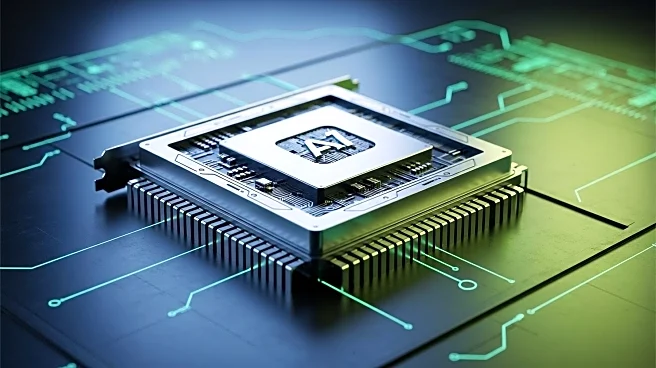What's Happening?
Intel has announced a new GPU, codenamed Crescent Island, designed for AI inferencing, set to launch in the second half of next year. This GPU utilizes Intel's next-gen Xe3P graphics architecture and features
160 GB of LPDDR5X memory, indicating a focus on value rather than top-tier AI performance. The announcement comes amid speculation about Intel's future gaming GPUs, as Crescent Island could potentially preview Intel's next-gen gaming graphics cards. The absence of Intel's Celestial graphics architecture, which was expected to follow the current Battlemage tech, adds to the intrigue surrounding Intel's future plans in the GPU market.
Why It's Important?
The introduction of Crescent Island marks a significant step for Intel in the AI and data center markets, potentially impacting its position against competitors like Nvidia. The use of Xe3P architecture suggests a unified approach that could streamline Intel's GPU offerings across different sectors, including gaming. This development could enhance Intel's competitiveness in the high-performance graphics market, offering a versatile solution that bridges AI and gaming applications. Stakeholders in the tech industry, including developers and businesses relying on AI and graphics processing, may benefit from Intel's advancements, while competitors may need to adjust their strategies in response.
What's Next?
Intel's announcement of Crescent Island sets the stage for further developments in its GPU lineup, with potential implications for its gaming graphics cards. As Intel continues to refine its software support for professional GPUs, industry observers will be watching for more details on how Crescent Island might influence future gaming products. The tech community will likely speculate on the capabilities of Xe3P architecture in both data centers and gaming PCs, anticipating Intel's next moves in the competitive GPU market.
Beyond the Headlines
The early announcement of Crescent Island reflects Intel's strategic positioning in the evolving AI and graphics landscape. By potentially unifying its graphics architecture, Intel may be aiming to optimize resource allocation and enhance product versatility. This approach could lead to long-term shifts in how Intel designs and markets its GPUs, influencing industry standards and consumer expectations.












